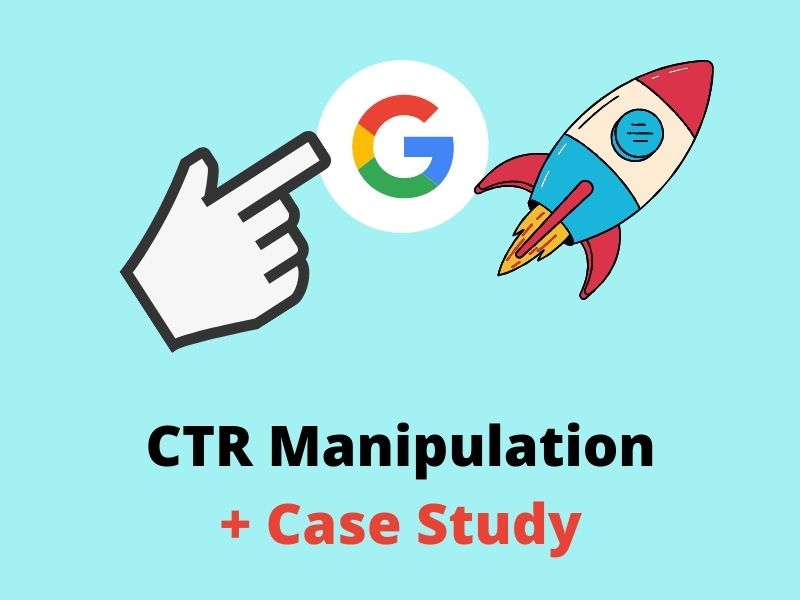CTR Manipulation: A Video Game Changer for Digital Projects
The rise of CTR adjustment has indisputably changed electronic advertising and marketing techniques, providing marketing professionals with tools to boost engagement and drive website traffic properly. What implications might this stabilizing act hold for the future of electronic campaigns?
Recognizing CTR Control
Although click-through price (CTR) control might appear like a straightforward technique in electronic advertising, it encompasses a variety of approaches focused on synthetically blowing up engagement metrics. This control can take numerous forms, including the usage of click farms, bots, or deceitful advertisement positionings that misinform consumers into clicking. These strategies can compromise the honesty of performance information, making it challenging for marketing experts to gauge the authentic efficiency of their campaigns.
In addition, CTR manipulation raises honest worries, as it threatens the transparency of digital advertising and marketing. The dependence on filled with air metrics can bring about illinformed marketing decisions, skewing resource allotment and campaign strategies. Services may spend heavily in channels and strategies that appear effective yet do not generate actual interaction or conversions.

Advantages of Click-Through Rate Optimization
Maximizing click-through price (CTR) is crucial for enhancing the performance of digital advertising projects. A greater CTR shows that a larger percentage of customers are engaging with the content, which can cause increased site traffic and far better conversion rates. By improving CTR, brands can successfully designate their advertising resources to efforts that yield the highest possible returns.
Among the primary advantages of CTR optimization is the potential for improved ad positioning and lower expenses - CTR Manipulation. Platforms like Google Ads reward higher CTRs with far better advertisement positioning and reduced cost-per-click (CPC), allowing marketers to stretch their budget plans even more. Additionally, a well-optimized CTR can improve brand visibility, as greater interaction prices typically correlate with increased organic reach

Methods for Effective CTR Control
To effectively manipulate click-through prices (CTR), marketers can employ a range of tactical strategies that improve user involvement and drive traffic. One essential strategy is optimizing ad duplicate to develop engaging and action-oriented language. CTR Manipulation. Utilizing solid call-to-action (CTA) expressions urges users to take immediate action, boosting the chance of clicks
Another effective strategy is A/B testing, which enables online marketers to contrast different ad variants. By systematically analyzing performance metrics, they can determine which components resonate finest with the target market, thereby fine-tuning their methods for optimal effect. In addition, leveraging aesthetically appealing graphics and concise messaging can catch attention swiftly, making it more probable that users will involve.

Lastly, optimizing touchdown web pages to ensure a seamless customer experience can lower bounce prices and motivate further communication, inevitably promoting higher CTR. By incorporating these strategies, online marketers can efficiently manipulate CTR to attain their project goals.
Measuring Success in Digital Projects
Gauging success in electronic projects calls for a clear understanding of crucial performance indications (KPIs) that straighten with campaign objectives. KPIs act as quantifiable metrics that help assess the effectiveness of numerous methods employed throughout the project. Common KPIs consist of click-through rates (CTR), conversion prices, expense per acquisition (CPA), and return on investment (ROI)
To properly determine success, it is essential to develop particular, quantifiable goals initially of the campaign. If the primary purpose is to boost brand understanding, metrics such as impressions and interaction rates may be focused on. In contrast, projects concentrated on direct sales would certainly profit from a much more comprehensive evaluation of conversion rates and revenue produced.
Routine analysis of these KPIs makes it possible for marketers to make data-driven choices, optimizing their techniques in real-time. Making use of analytical devices can assist in tracking performance and determining fads, enabling swift modifications to boost project outcomes. Eventually, an extensive technique to gauging success not just highlights locations for improvement but additionally enhances the overall effectiveness of electronic advertising and marketing initiatives, driving sustained growth and interaction in the long-term.
Future Patterns in Digital Advertising And Marketing
Expecting the future of electronic advertising and marketing exposes a landscape shaped by quick technological advancements and transforming customer actions. As man-made intelligence and artificial intelligence remain to advance, marketing professionals will progressively take advantage of these technologies to personalize campaigns at an unprecedented range. Anticipating analytics will certainly allow brands to anticipate customer needs, enhancing advertisement positionings and material shipment in real time.
Moreover, the surge of voice search and clever gadgets is transforming how consumers communicate with digital web content. Marketing experts will certainly need to adapt their approaches to make certain exposure across multiple systems, consisting of voice-activated assistants. This change requires a concentrate on conversational marketing, stressing interaction through dialogue instead of traditional advertising strategies.
Additionally, personal privacy issues are motivating modifications in data collection techniques. Openness and honest data use will certainly become paramount, driving brand names to foster trust fund and commitment amongst customers. The ongoing evolution of social media sites systems will likewise affect advertising strategies, with an increased focus on authenticity and user-generated web content.
Final Thought
In recap, CTR adjustment stands for a considerable development in digital advertising and marketing methods, providing immediate advantages with improved involvement metrics. The recurring development of digital advertising and marketing will depend on this fragile interaction, shaping the future landscape of brand-consumer communications.